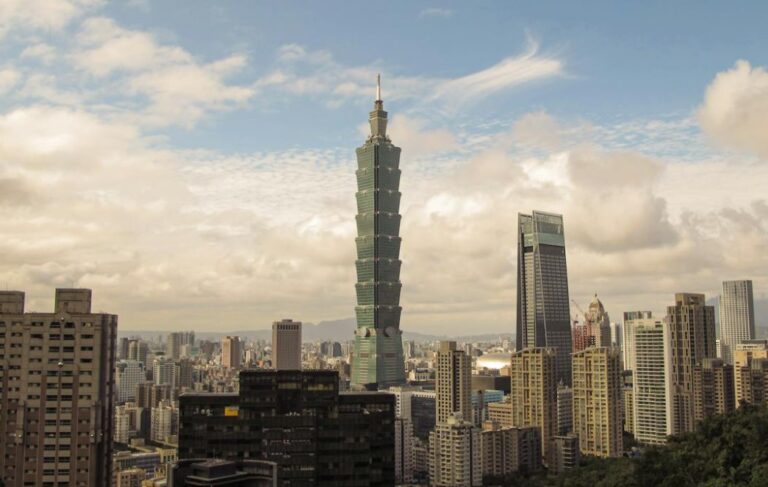The economy is the pillar of development for any country. Talking about economies in Asia, some of the world’s most developed countries are on this continent. For example, China itself has almost half of the continent’s gross domestic product.
In 1960, Asia’s gross domestic product was merely 4 percent, but 2019 it was almost 35 percent. This made Asia powerful and known to all. So, let’s study Asia’s top 10 emerging economies in 2024.
Table of Contents
China
Strategic five-year initiatives and industrial regulations have helped China achieve the unthinkable that it is the world’s largest emerging economy. China’s economy includes government-run enterprises, mixed-ownership, and private sectors, which make it the most emerging economy in Asia. After the revolutionary economic reforms in 1978, China became the fastest growing economy in the world.
China’s average economic growth rate has been 10 percent for the last 30 years. With over 8 percent more than in 2022, China’s GDP reached over 19 trillion dollars in 2023.
India
The largest democratic country, India is one of the best emerging economies in Asia. A country with such a huge population has to strengthen its economic power after all. After the economic reforms in 1991, India has grown significantly in the field of finance. In the last decade, India grew 7.1 percent, with severe fluctuations due to economic and social challenges.
However, it is a calculated speculation that India will have an average growth rate of 8 percent in the upcoming decade. Moreover, in terms of nominal GDP, India is at rank 5 in the entire world.
Indonesia
There are several factors that represent the economic picture of Indonesia, like political affairs, natural resources, controlled inflation, and stable development of financial systems. The average GDP growth of Indonesia per year stands at 5 percent.
Indonesia faced a lot of challenges but still evolved as the third-fastest growing economy in Asia. Regarding nominal GDP, Indonesia stands at rank 16 in the world.
Thailand
Thailand’s free-market economy stands at rank 27 in the world rankings and 2nd in southeast Asia, following Indonesia. Thailand’s nominal GDP is around 575 billion dollars. With a robust domestic market that goes hand in hand with the private sector, Thailand has a decent engine for its growth.
Thailand’s exports account for more than 69 percent of the gross domestic product. Also, the industrial sector accounts for 40 percent of Thailand’s GDP.
Vietnam
When the labor allocation shifted to manufacturing and services, Vietnam started witnessing an improvement in the economic sector. The factors that helped Vietnam be on the list of emerging economies in Asia are robust tourism, rising earnings, private investments, and urbanization.
Vietnam had a GDP of around 7 percent in 2019, but fell to almost 3 percent in COVID period. However, Vietnam almost doubled it in 2023.
Malaysia
One of the wealthiest countries in Asia with a small population of 32 million, Malaysia is one of the best emerging economies in Asia. With a global GDP rank of 35 and 4th in ASEAN, Malaysia is seen as an upper-middle-income country. Malaysia’s per capita income is 12,295 US dollars.
The country has focused a lot on manufacturing and service sectors rather than entirely depending upon agriculture. Malaysia’s unemployment rate is very low, that is less than 5 percent.
Philippines
According to a report of 2023, Philippines stands at global rank 36 while talking about nominal gross domestic product. In Asia, the Philippines has the 12th best nominal GDP. The country has a strong servicing performance, robust business activities, calculated real estate goals etc. All these form a strong base for an economic boost of the country.
In the last decade, the average growth of the Philippines has been stable at 6.4 percent. This was 2 percent more than that of the 2000-2009 session.
Cambodia
With a world GDP ranking of 109, Cambodia is also one of the emerging economies in Asia. In the last two decades, Cambodia experienced a huge economic boost. The most responsible factors behind this large-scale improvement are the textile, footwear, garment, tourism, and construction sectors.
Companies in Cambodia practice the ‘plus one’ production that helps the nation to grow better. International enterprises also involve themselves in the Cambodian market, which further boosts its economy.
Taiwan
In 2019, Taiwan WTO made a collaboration with the Asian Program of the Carnegie Endowment for International Peace and with the CIER to examine the future of Taiwan in the economic sector.
Through this, Taiwan got the assurance of technological advancement to fight with the rising challenges against its innovative ecosystem. Industrial production also helped Taiwan a lot in boosting the economy.
South Korea
South Korea’s economy is termed as a ‘highly developed mixed economy’. Being the 4th largest Asian economy, its nominal GDP is more than 1.70 trillion dollars. Since the 1980s, South Korea’s economy has grown rapidly due to industrial evolution and service sector performance.
The gross national income of South Korea in 2023 was 425.715 USD bn.
Read more: The 8 richest countries in Asia












